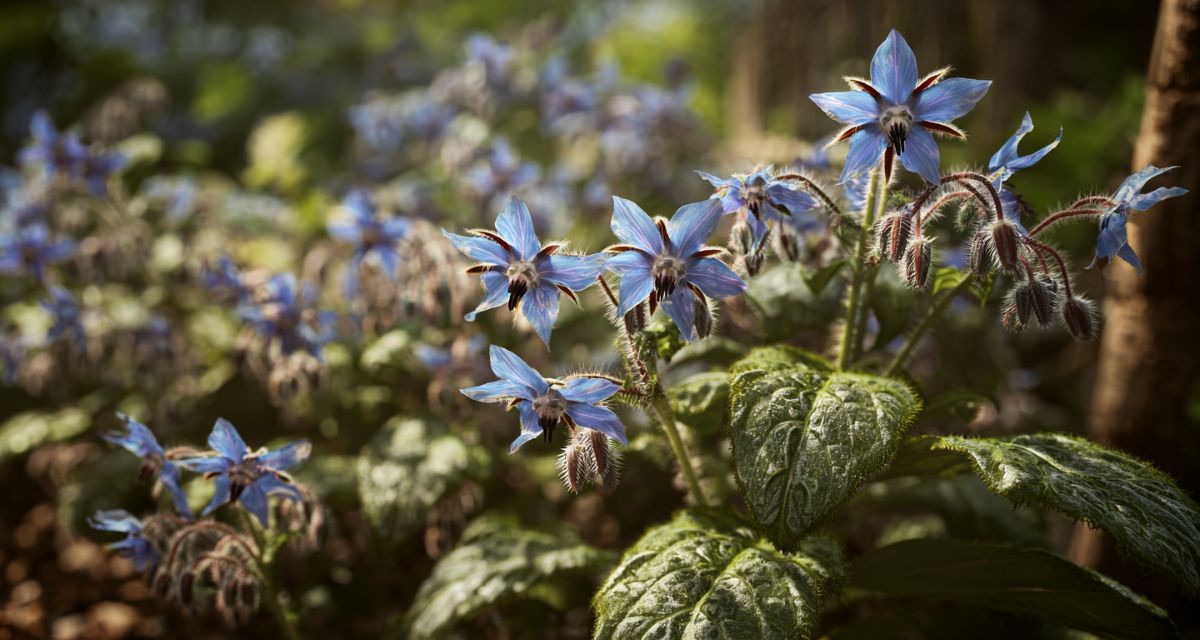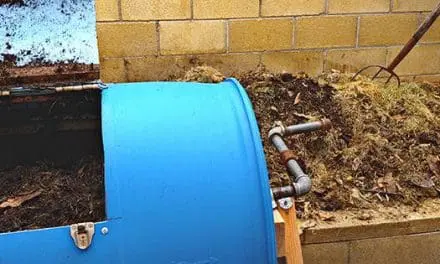Borage is a hardy annual herb known for its bright star shaped blue flowers and its long history as a soothing, uplifting plant in traditional folk medicine. Sometimes called “starflower,” borage grows easily in poor soils, attracts pollinators, and offers both culinary and medicinal value. Many gardeners plant it simply because bees love it, but herbalists have long turned to borage for support during stressful seasons and times of emotional strain.
At first glance, borage seems like a humble backyard plant. Its fuzzy leaves and vibrant blossoms may look delicate, yet this herb has stood beside healers for centuries. In older texts, borage was considered a plant that “gladdened the heart,” bringing strength and courage to those who used it. Today, it remains a useful herb for anyone looking to reconnect with gentle, traditional remedies.
How to Identify Borage
Borage is easy to spot once you know what to look for. It grows on sturdy, hollow stems with bristly hairs covering both the leaves and stalks. The leaves are oval, wrinkled, and soft beneath their fine fuzz. Blooming from late spring into summer, its blue star shaped flowers hang delicately from nodding stems, often visited by bees throughout the day.
Although the blue form is most common, you may occasionally see pink or white varieties. The plant typically grows one to two feet tall and spreads freely if allowed to reseed.
Traditional Uses
Historically, borage was valued for its calming and uplifting qualities. Many herbalists used it during times of emotional fatigue, seasonal sadness, or after periods of strenuous work. The leaves and flowers were added to teas or tinctures to help support the nervous system and encourage a balanced mood.
In traditional cooling remedies, borage was also used to soothe dryness and heat in the body. Herbalists reached for it during warm weather or whenever someone appeared depleted or overheated.
A Supportive Tea for Soothing Moments
Borage tea has been appreciated for centuries as a gentle way to cool the body and ease tension. Fresh leaves or flowers steeped in warm water create a lightly aromatic tea that supports hydration and calm. Some older herbal writings speak of borage as a restorative tea after illness, especially when the body needs both fluids and gentle nourishment.
The tea is mild, making it suitable for occasional use when the body feels tired or the mind feels unsettled.
Benefits for Skin and Inflammation
One of the most notable modern uses of borage is found in its seeds. Borage seed oil is rich in gamma linolenic acid, a fatty acid known for supporting healthy skin and helping to ease minor inflammation. Many people use borage oil topically to comfort dry or irritated skin, especially during harsh weather.
Although this oil is concentrated and should be used with care, it remains one of the most valuable parts of the plant for topical herbal remedies.
A Helpful Companion in the Garden
Beyond its herbal uses, borage is loved by gardeners for the life it brings to the garden. Bees, butterflies, and beneficial insects flock to its blossoms, improving pollination for nearby plants. Borage is often grown beside tomatoes, squash, strawberries, and brassicas to help support healthier growth.
The plant also breaks down into a mineral rich mulch once it dies back, returning nutrients to the soil naturally.
Culinary Uses
Both the flowers and young leaves are edible. The flowers add a gentle sweetness and a splash of color to salads, drinks, and desserts. The leaves have a mild cucumber like flavor, although their texture makes them best when chopped finely or cooked.
Many traditional cooks used borage in cooling summer dishes or herbal drinks meant to refresh the body during warm weather.
Safety Considerations
While borage is a gentle herb, the leaves contain small amounts of pyrrolizidine alkaloids. Occasional culinary or tea use is generally considered safe, but long term or heavy use is not recommended. Borage seed oil should be used sparingly and with guidance from a qualified practitioner.
As with all herbs, moderation and respect for the plant’s strengths are important.
Final Thoughts
Borage is far more than a pretty garden flower. It is a plant with deep roots in traditional herbal practice, known for its calming qualities, cooling nature, and ability to support both body and garden. Whether used in a soothing tea, grown as a pollinator friendly companion plant, or admired for its bright blossoms, borage remains one of nature’s quieter but deeply valuable herbs.
The Forgotten Home Apothecary
If borage sparks your interest in simple, time tested herbal remedies, you will find even more value in The Forgotten Home Apothecary. This guide brings together traditional plant knowledge, practical preparations, and gentle remedies meant for real families. It helps you understand how to use everyday herbs with confidence and clarity, just as earlier generations once did.
Whether you want to build your own home apothecary, learn which plants offer the greatest support, or reconnect with natural healing, this resource offers a grounded and trustworthy path. It is a reminder that the most reliable remedies often come from the garden, not the pharmacy.
This Tiny Bug Can Destroy Your Garden in 48 Hours
50+ Items You Should Stockpile Before The Next Great Depression (Video)
Borax Ant Killer: A Simple, Natural Way to Reclaim Your Home














